Perot Museum of Nature and Science plaza, frogs, and rooftop garden
Over the weekend we traveled to Dallas to visit our son at college and do a little sightseeing in Big D. We’d stared curiously at this Borg-like building from the highway through downtown Dallas on several previous visits, and this time we finally had a chance to visit the new Perot Museum of Nature and Science.
A white cube, it’s striking amid the glass skyscrapers of downtown, and up close it’s even better, with textured ridges and horizontal slit windows. A dramatic glass escalator hangs onto the building’s facade, and you can see people riding it from the highway. We rode it too and enjoyed views of downtown as we ascended.
An encircled entry plaza is bisected by a wide rill that cascades down a few steps and flows into…
…a froggy children’s play area on a lower level near the entrance. Children are encouraged to take off their shoes and wade in the “creek” (not pictured in the foreground). Sheltered by a bosque of bald cypresses, with artificial turf standing in for a swampy lake, it’s a charming place for kids to burn off some energy.
We saw kids playing leapfrog on the frog’s backs and having a fine time.
Inside, you enjoy multiple views of a green roof planted with tawny grasses, “shingled” with slabs of sandstone, and littered with monumental concrete slabs that look as if pieces of the building fell off during construction — or as if this is a post-apocalyptic garden that nature is reclaiming.
Designed by landscape architecture firm Talley Associates, the grounds are as interesting as the building itself. According to the museum website:
The landscape design celebrates an abstract cross-section of Texas, from an East Texas-inspired forest of large native canopy trees to the plains of the Texas Panhandle. Tucked within the bosque of mature trees is an urban plaza complete with the Café and an interactive water feature. An acre of rolling roofscape comprised of rock shards and native Texas drought-resistant grasses reflects Texas’ indigenous landscape. The parking lot to the east is bordered by a planted bioswale to capture runoff water for the cistern system.
Here’s the bioswale, which collects runoff from the parking lot.
As for the museum’s indoor exhibits, I thought they were nicely designed but just OK in content and too dependent on informational plaques that you read rather than interesting displays. However, we didn’t visit the children’s interactive museum on the lower floor, and maybe that’s the big draw. Still, it’s a good place to while away a couple of hours, and anyone with an interest in architecture and landscape architecture will enjoy visiting.
All material © 2006-2014 by Pam Penick for Digging. Unauthorized reproduction prohibited.


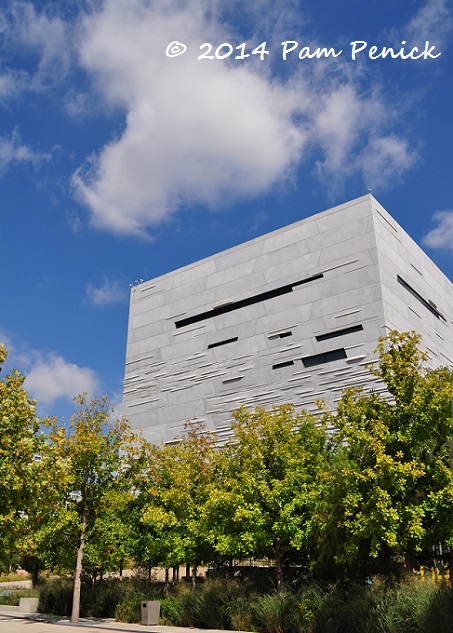
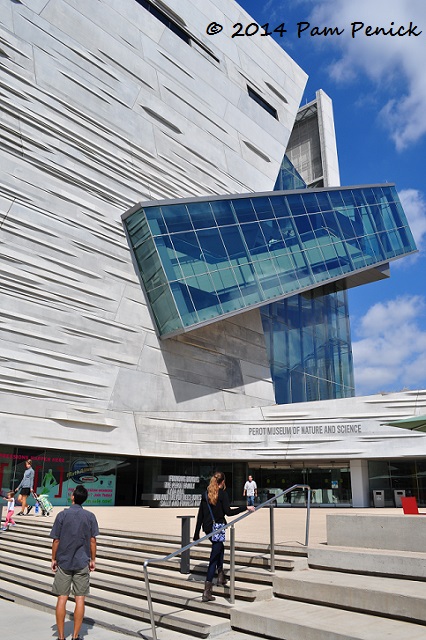
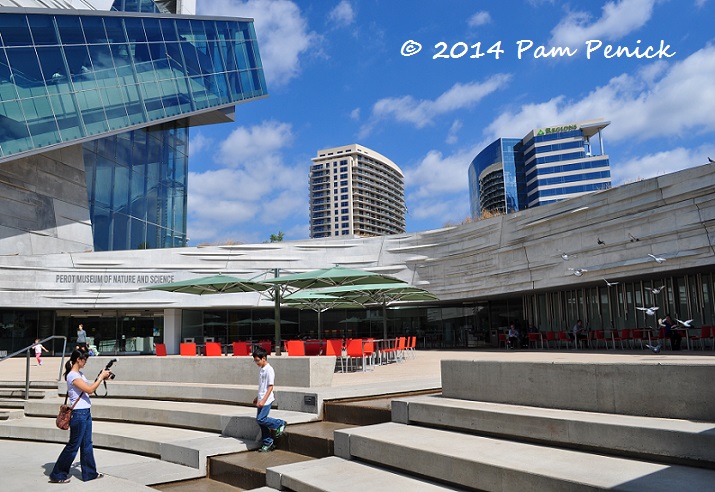
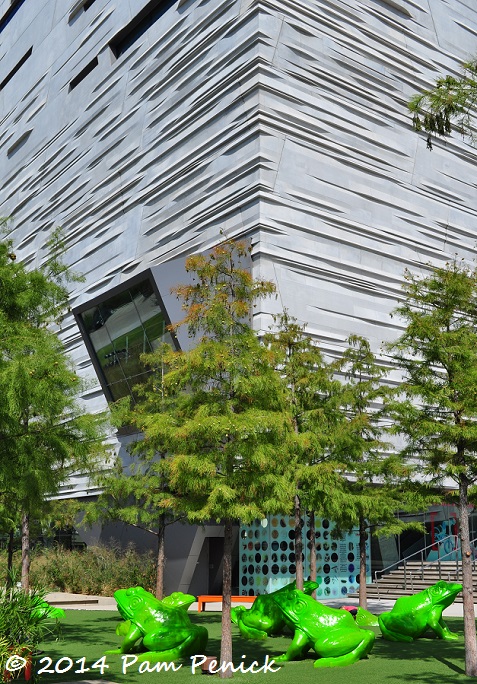
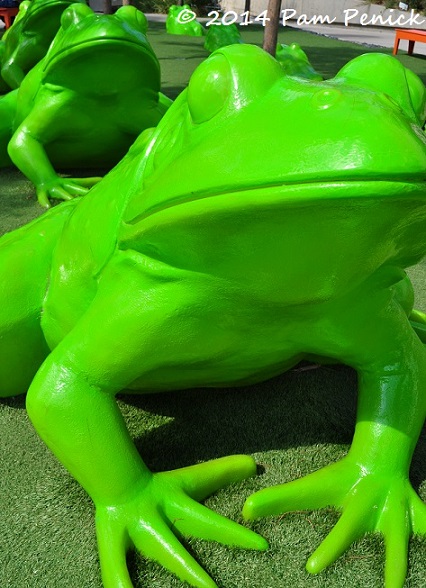
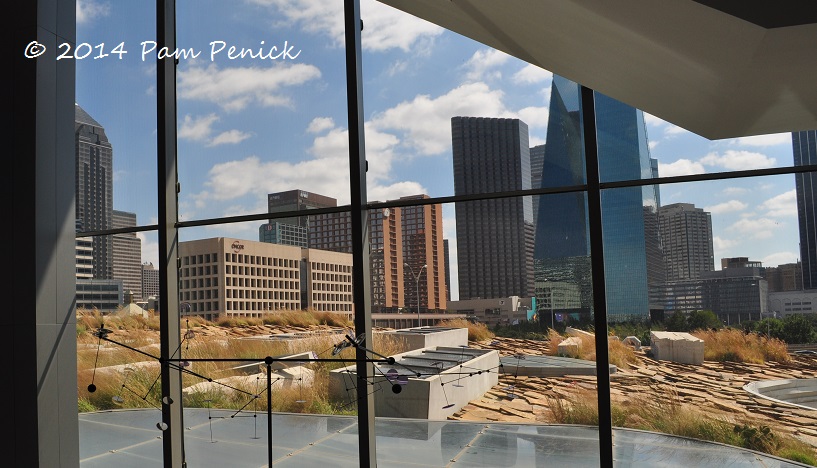
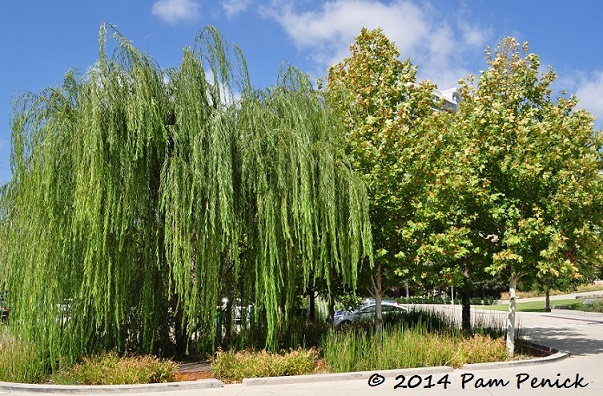
I have seen that building many times in its construction phase and never been very impressed. I can see now it is worth a visit. Thanks for the suggestion.
Well, if you don’t care for the architecture you may not find it worth a visit. That was a big draw for us, and the landscaping was a pleasant surprise. The exhibits, for me anyway, were not as interesting. —Pam
The outside is so dramatic and interesting that it’s a shame it’s not as interesting inside. Love that bioswale.
I know. It’s not that the exhibits were bad. It’s just that they didn’t engage me as I’d hoped they would. The building itself is very cool though. —Pam
Pam, I just finished this book (The boom : how fracking ignited the American energy revolution and changed the world /by Gold, Russell .) last night, and in the final chapter he talks about the museum. He emphasized the parts related to energy of course. I would recommend the book. I thought it was objective, well-documented (no pun intended), and current (pub: 2014).
I’ll look for it at the library, Mark. Thanks for the heads up. —Pam
Those green frogs are the stuff of dreams and nightmares both. I’m sorry to hear the exhibits aren’t more entertaining – it is a real gift to be able to educate and enlighten in a way that leads the learner along rather than dragging. Disney occasionally got it just right while NASA often fails. I wonder if it represents a falsely perceived bifurcation between entertainment and educational that ought not exist?
That’s a good question, Deb. But I’m sidetracked by your comment about the frogs being the stuff of dreams and nightmares, and wondering just how they’d figure into your imaginative world! —Pam